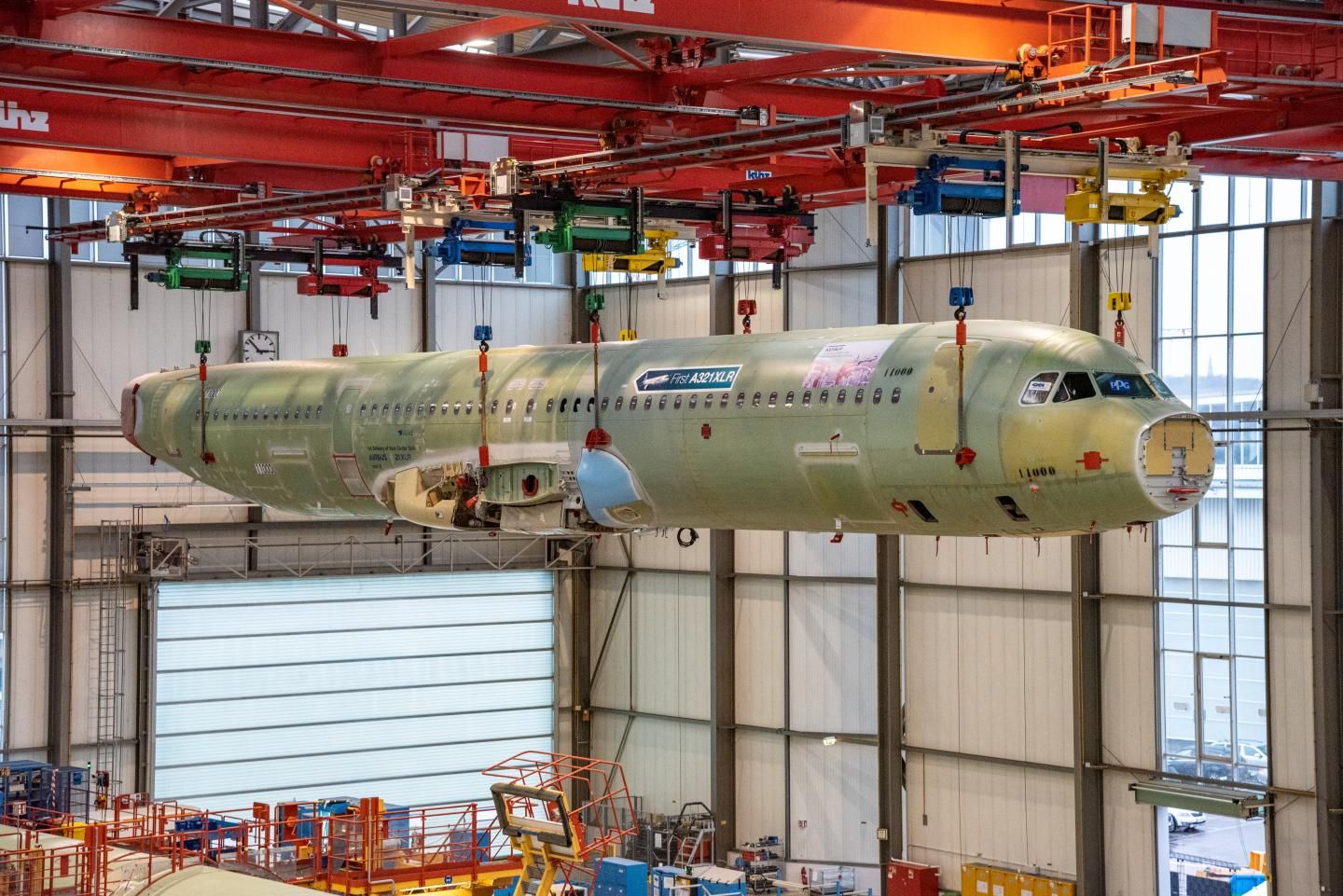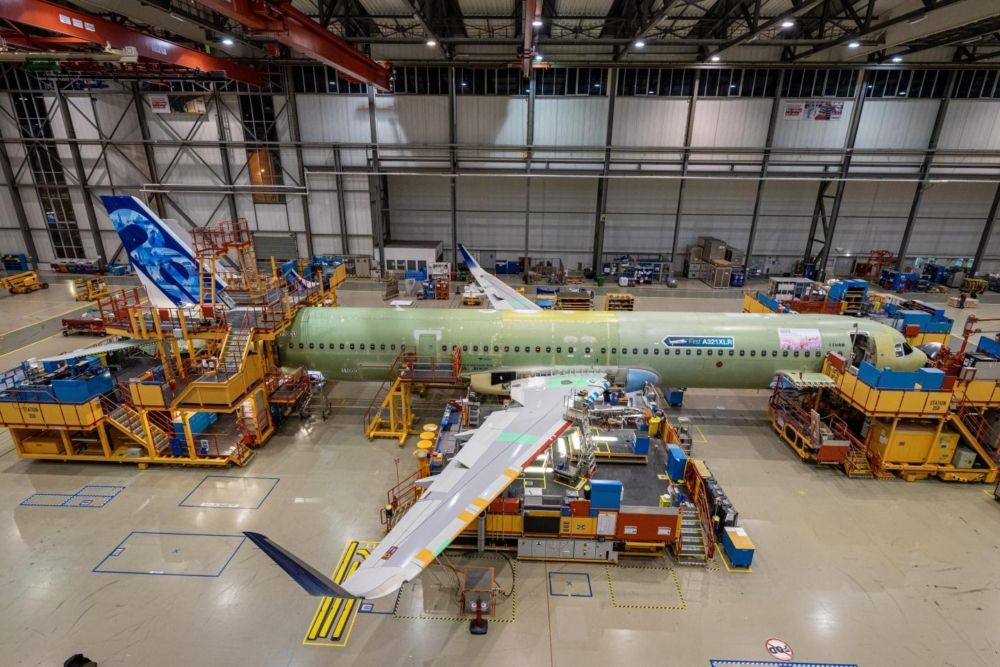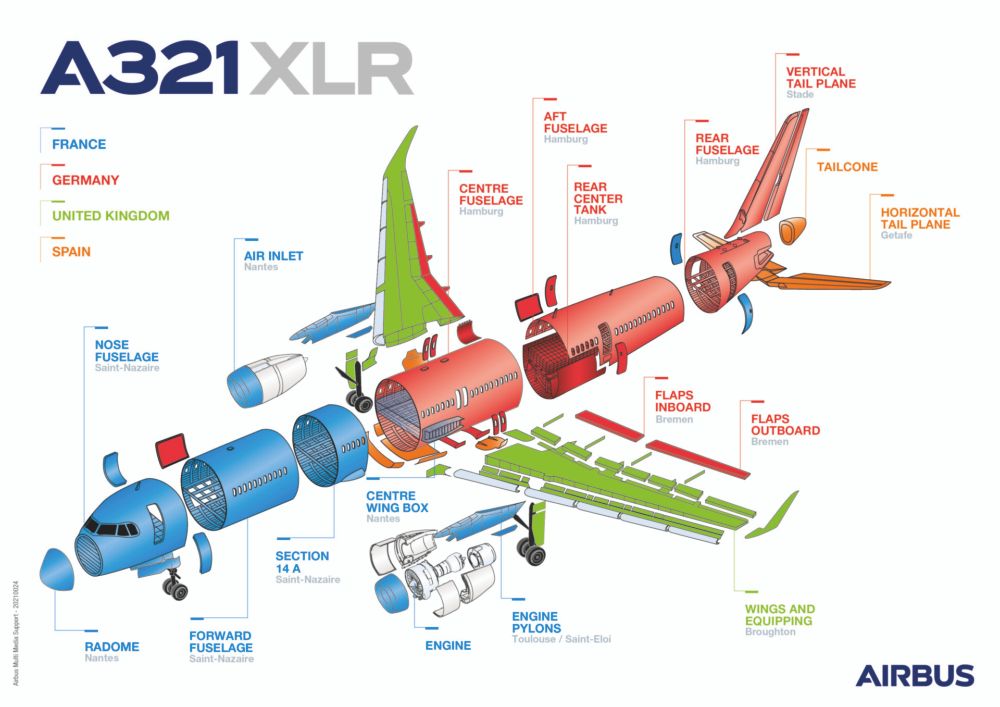There has been considerable excitement surrounding the Airbus A321XLR in recent years. Seen by many as a cornerstone of the movement towards long-haul narrowbody aircraft, Airbus constructs the type in Hamburg, Germany. Let's take a closer look at this process.
A dedicated production line
Airbus has assembled its first A321XLR aircraft on a dedicated final assembly line (FAL) in Hamburg. The north-German city is one of the European planemaker's key bases, alongside Toulouse, which is home to production lines for designs like the A350.
Assembly of the A321XLR prototypes has taken place in Hangar 9, one of four A320 family FALs in Hamburg. This can only take place once the relevant components have been flown in from all over Europe. Going forward, Airbus may expand A321XLR production to other FALs, with Airbus's Head of the A320 Family Program, Michael Menking, explaining that:
"We are currently on the way to also having the A321XLR delivered out of other Single Aisle FALs. So it is important that all the teams learn from the experience in Hamburg so we can bring this knowledge to the other facilities. This is also what we are doing with the A320 Family Airspace cabin which we started in Hamburg."
A multi-stage process
Once the aircraft's components are on-site, they undergo a four-week journey on their way to becoming a recognizable airframe. This begins at Station 42/43 of Hangar 9, where the two fuselage modules are fitted with 'monuments' like galleys and bathrooms.
They then move on to Station 41, where 3,000 rivets join the modules together. This is also where aspects like interior furnishings and electrical systems join the new aircraft. After this, the airframe takes its first 'flight' by crane to Station 40. Here, it has its wings and landing gear attached. The former requires 2,400 rivets, and the latter needs minute precision.
Station 35 is one of the busiest parts of the assembly line. Here, the aircraft receives several key components, including its horizontal and vertical tailplanes. This is also where its fuel tanks are sealed. At Station 25, cabin systems like lighting and entertainment systems are installed, before the process concludes at Station 23 with testing and interior finishing.
Stay informed: Sign up for our daily and weekly aviation news digests.
What's next for the A321XLR?
Airbus began building its first A321XLR in May 2021, following the delivery of the Rear Center Tank that enables its long-range abilities. By December, it was putting the finishing touches on the new twinjet, with flight testing expected to commence in 2022. Airbus explains:
"[Test teams] will activate and run through a series of ground tests on all the systems, flight controls, engines, and the APU. Then all being well, they will perform the taxiing runs and of course the first flight of the XLR, which will take place next year."
If the flight testing program all goes to plan, Airbus is expecting to be able to commence mass production of the A321XLR in 2023. This is also when it expects the type to enter service. It has been several years in the making, but we should see it in the skies before long.
What do you make of the Airbus A321XLR? Are you looking forward to seeing it take to the skies? Let us know your thoughts in the comments!



